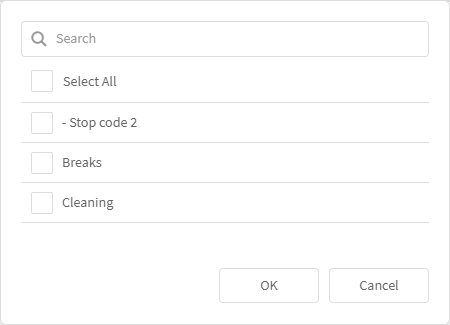Introduction
- This guide describes how to create stop causes, organize them in a tree structure, use the tree structure and categorize stop causes to stops.
A stop cause is a description of why the manufacturing process is halted or slower than excepted.
The OEE site uses Unit to represent a machine or sub-machine that produces goods.
You can create stop causes and organize them in a tree.
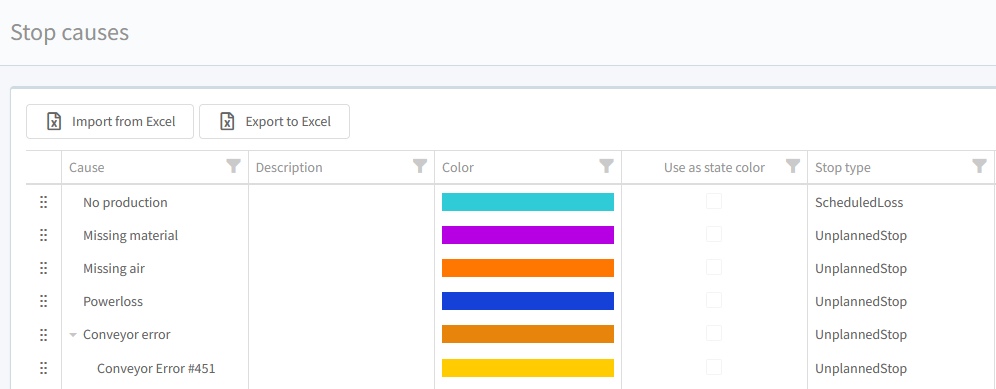
Set-up which stop causes are related to a unit.
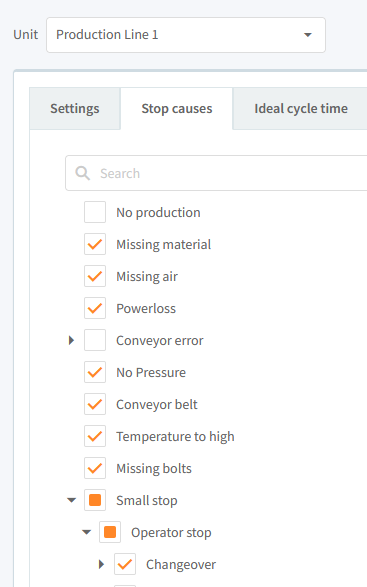
And categorize a stop cause to a stop, that has happened on a unit.
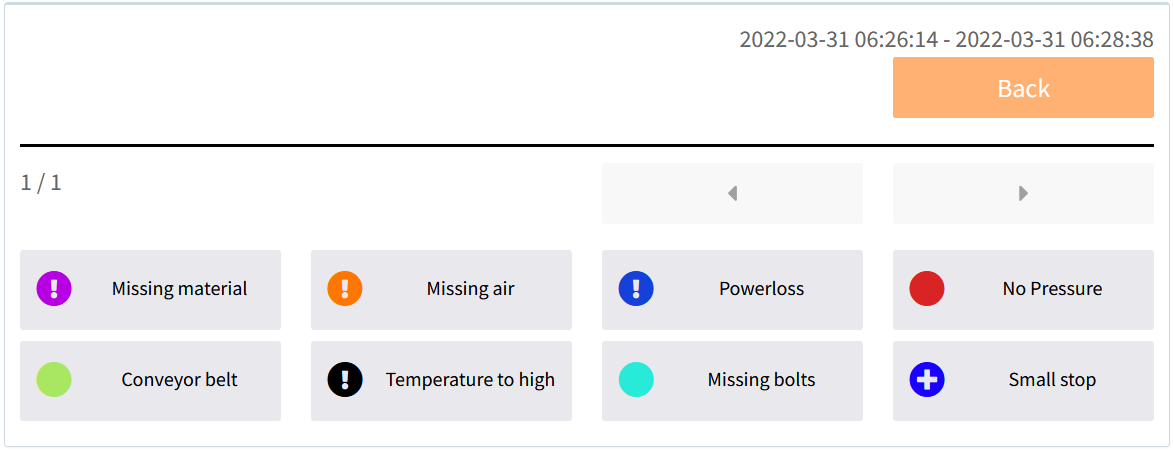
Setup
Go to the "Stop causes" menu.
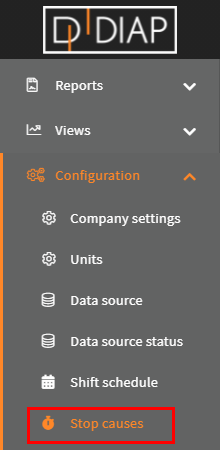
Create a stop cause
Click the "+" to create a new stop cause.

Provide the following information to describe a stop.
Cause:
Give a cause for the stop. This cause will represent the stop cause, when one categorizes a stop cause to a stop that has happened.

The flag left of the input box indicates current language, and the "pencil" button right of it is used if one wants different translations for the cause.
The flags below and to the right indicates what translations there are for this cause.
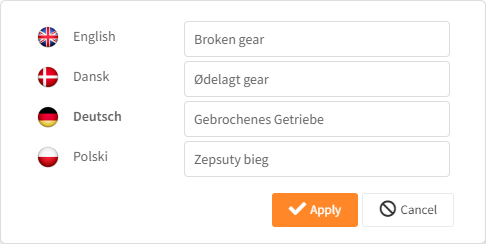
Description:
Give a meaningful description of the stop.

Color:
Select a color, that will represent the stop cause in the graphs and timelines.
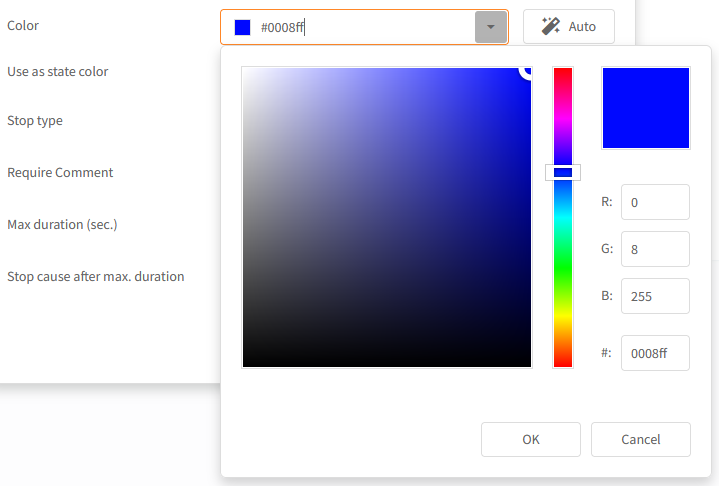
Use as state color:
Select whether the color of the stop cause should be used in the unit state components, when the unit is in a stop of the stop cause. You can read more about unit state here How to see a unit's current state

StopType:
Select a type that represents the stop cause. These are the following types:
- Scheduled Loss: This type represents a unit that is not scheduled for production (Shutdown, no orders, breaks and lunches). A stop of this type will be excluded from the OEE calculations.
- Planned Stop: This type represents a unit that is scheduled for production and is not running because of a planned event such as a changeover, setup or make-ready event. Planned stops affects the availability of the OEE calculations.
- Unplanned Stop: This type represents a unit that is scheduled for production and is not running because of a unplanned event such as a equipment failure or material shortage. Unplanned stops affects the availability of the OEE calculations.
- Info Stop: This type represent a unit that is scheduled for production and running but not production because of an outside cause like the unit hasn't received the necessary materials. Info stop affects the performance of the OEE calculations.

Require Comment:
Select whether one may enter a comment on a stop, that is categorized into the stop cause:
You can read more about comment on stop here: How to comment on stops
Max duration (sec.):
Set how many seconds a stop may span(0 = no max duration), then it is categorized into the stop cause, when the stop is longer than max duration, it is split into 2 stops. You can read more about max duration here: How to set max duration on stops

Stop cause after max. duration:
Select the stop cause, that will be used, when the stop is split because of max duration. You can read more about max duration here: How to set max duration on stops

Click "Apply" to save the new stop cause.
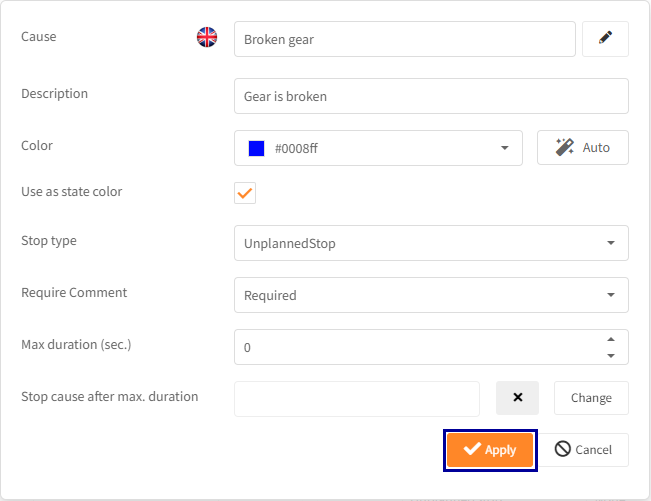

Organize stop cause in tree structure
You can a create a stop cause as a child to another stop cause by clicking the "+" for the stop cause that should be the parent.


Provide the Cause, Description, Color, Use as state color, StopType, Require Comment, Max duration and Stop cause after max. duration for the child stop cause and click "Apply".
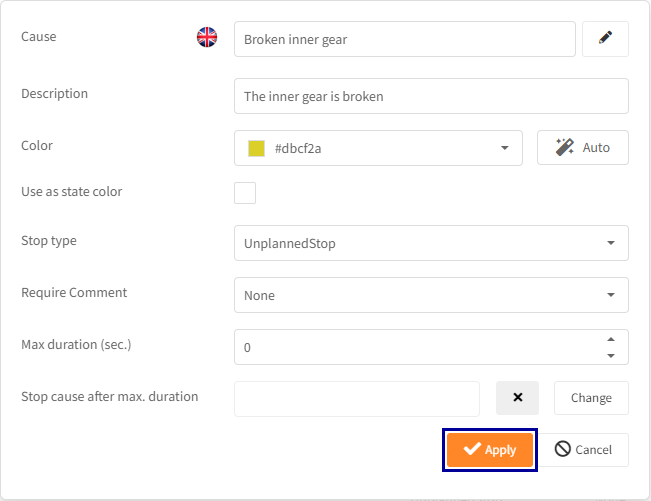

Organize by drag and drop
You can organize stop causes by clicking one's drag icon:

and dragging it onto another stop cause.



To set a stop cause as a root, drag it to the top of the table.
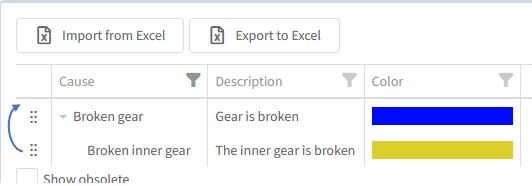
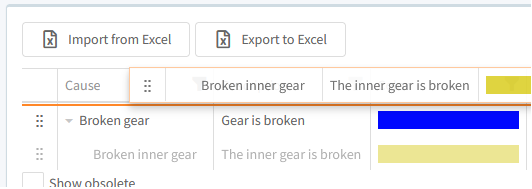
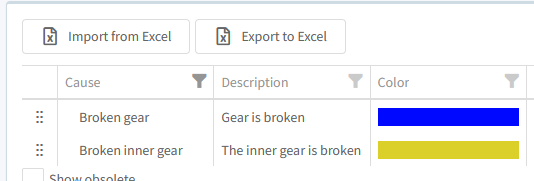
Organize stop causes into categories in tree structure
With the "+" method from Organize stop cause in tree structure and "drag and drop" method from Organize by drag and drop, you can organize your stop causes into categories, by having a parent stop cause be a category and its children be the stops causes, that belongs to the category.
To do this, first create your category stop cause:

Provide the Cause, Description, Color, Use as state color, StopType, Require Comment, Max duration and Stop cause after max. duration for the child stop cause:
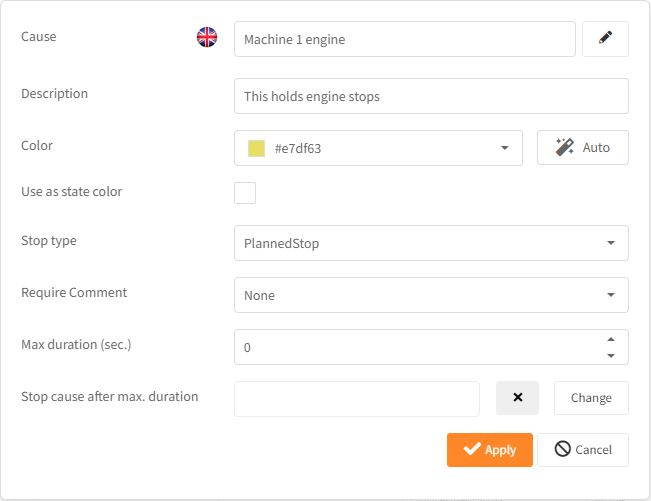
Click "Apply".
Now you have a stop cause that can be used as a category.

Add a stop cause to your category stop by clicking its "+".

Provide the Cause, Description, Color, Use as state color, StopType, Require Comment, Max duration and Stop cause after max. duration for the child stop cause:
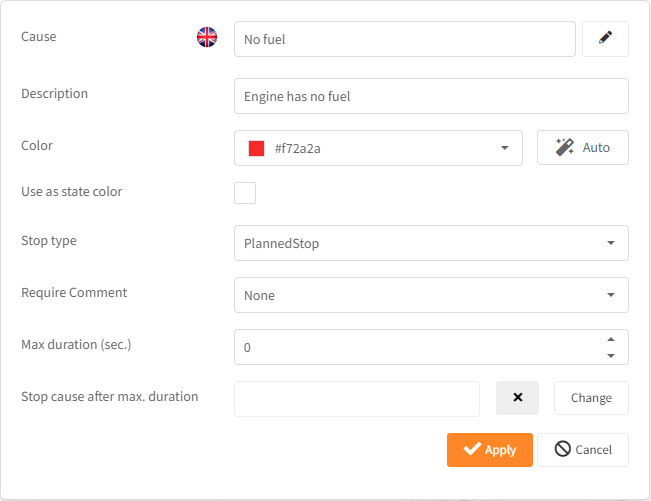
Click "Apply".
Now, you have a category with a stop cause belonging to it.

This way, you can view a full list of categories with stop causes in them.
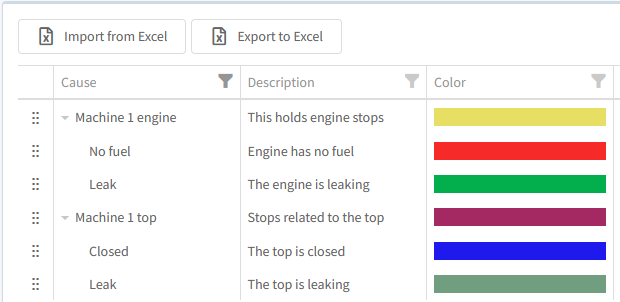
Edit stop cause
To edit a stop cause click "Edit" button.


Change the Cause, Description, Color, Use as state color, StopType, Require Comment, Max duration and Stop cause after max. duration and click "Apply".
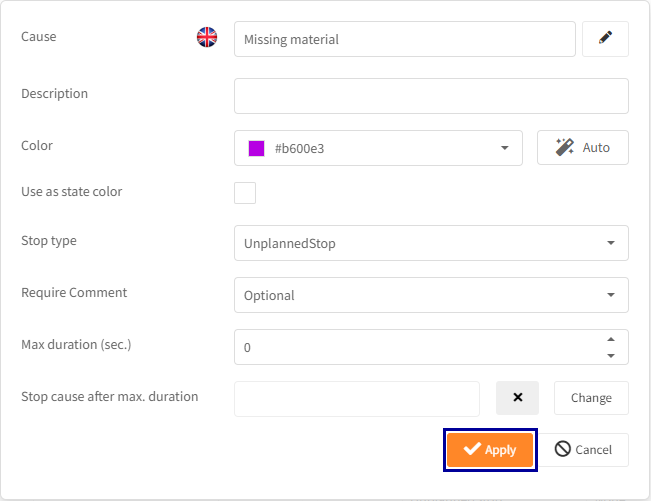
Delete a stop cause
To delete a stop cause, click the Trash button.

Click "Yes" in the pop-up.
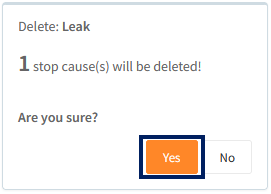
Deleting a parent stop cause
If you want to delete a stop cause that has children, consider moving them out of the parent stop cause, because deleting a parent stop cause will also delete the children.

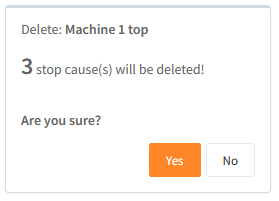
Stop cause filter
You can filter the data shown in the table, by clicking the filter icon for the column that you wish to filter.

In the popup, you can search for values or select values. Click "OK" to apply the filter.
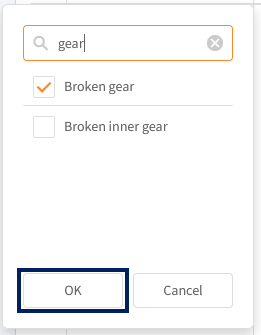

Assign stop causes to a unit
Go to the "Units" menu.

Select the unit.
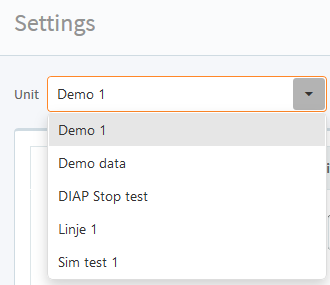
Click the "Stop causes" tab.

Click the stop causes that should be used with the unit.
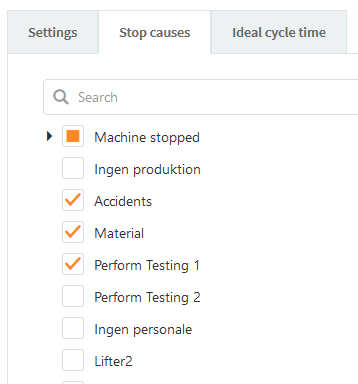
The square icon, means that some of the children are selected.

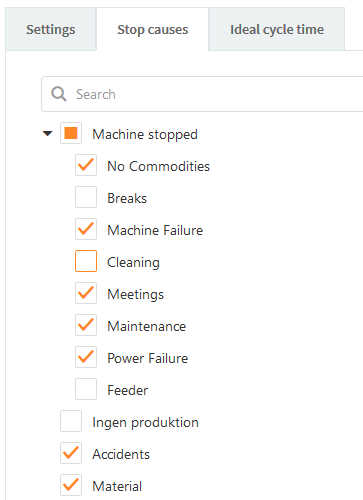
You can also search for a stop cause by its name or parts it contains.
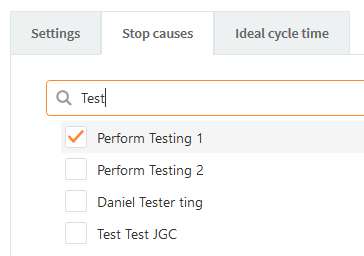
Now the selected stop causes are ready to be used for representing a stop by categorizing it.
Categorize a stop
There are 3 places where you can categorize a stop to a stop cause.
- Production Status.
- Operator
- Stop history.
Assign stop cause in Production status
Go to "Production status".

Select your unit.

If a stop has happened for the unit and it is not categorized, then the "Stop cause" button will be enabled. Click it.

A list of uncategorized stop is shown, click "Categorize" for a given stop.
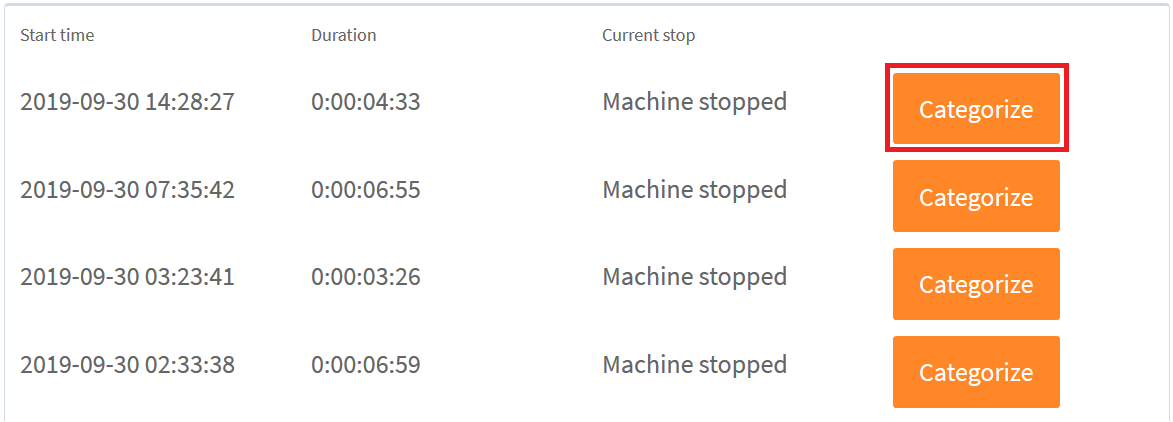
Now, a pop-up is shown with the assigned stop causes from Assign stop causes to a unit. Here, you can categorize a stop by clicking a stop cause that you wish to categorize it to (Only a stop cause without children can categorize the stop. Clicking one with children will take you to the children).
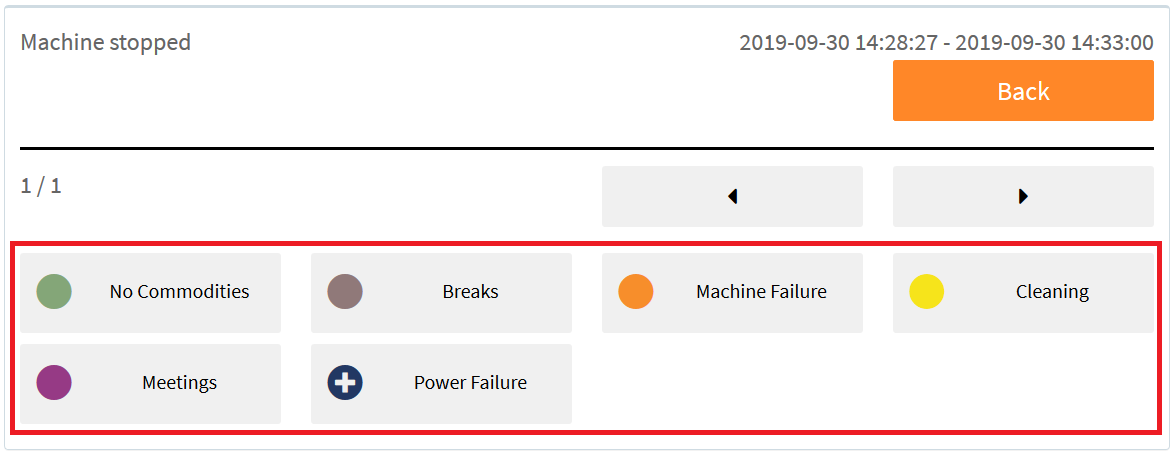
On the top of the pop-up, you can see information about the stop you are categorizing.

If the stop is stilling active, then "Not done" will be shown.
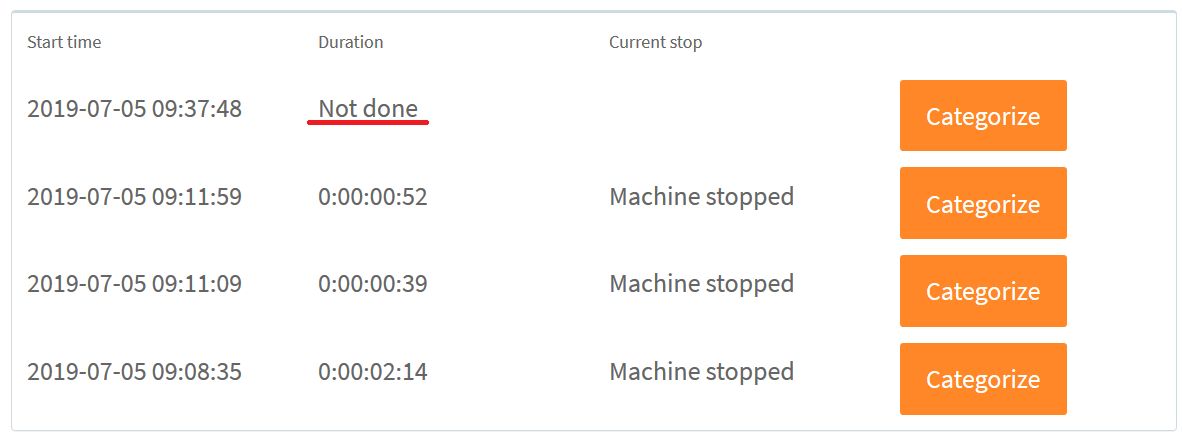

Navigation stop causes in categorize stop
When there are more than 16 possible choices, the stop causes are put into pages. You can switch between them with the arrows button.
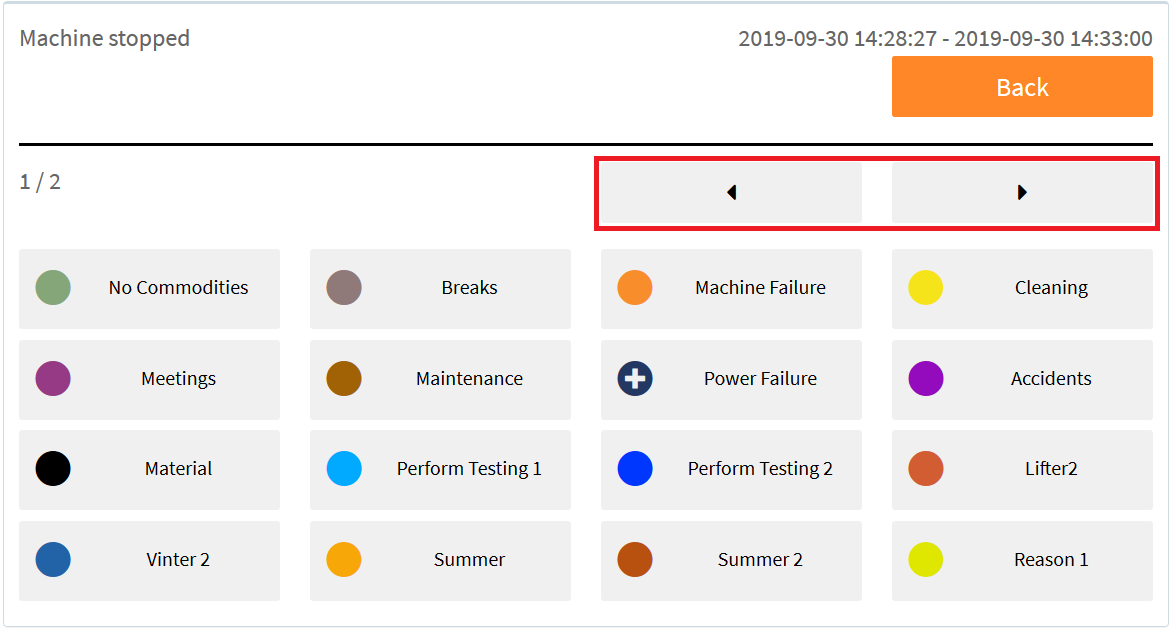

The plus (+) icon in a circle means, that there are children to the stop cause. Clicking one will show the children.
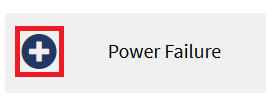
The Parent path in the tree is shown under the current stop.
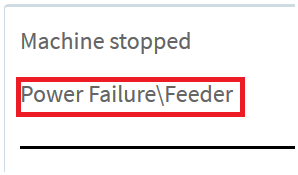
You can go back to the parent by clicking "Back".
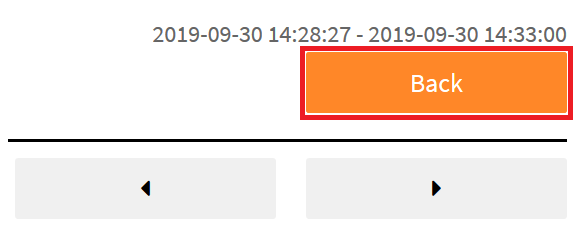
Stop cause choices in Production status
A uncategorized stop that has a stop cause will give you its children as choices, when you are categorizing it.



A uncategorized stop that doesn't has a stop cause, will give you all the stop causes you assigned to the unit.



Assign stop cause in Operator
Go to "Operator".
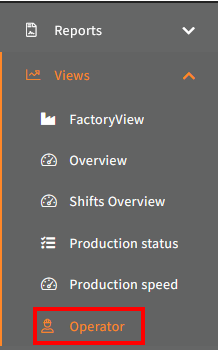
Open configuration:
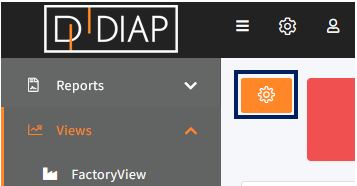
Select your unit:

Select a view that has the categorize stop in it (you can read more about the operator view here How to use the "Operator" view):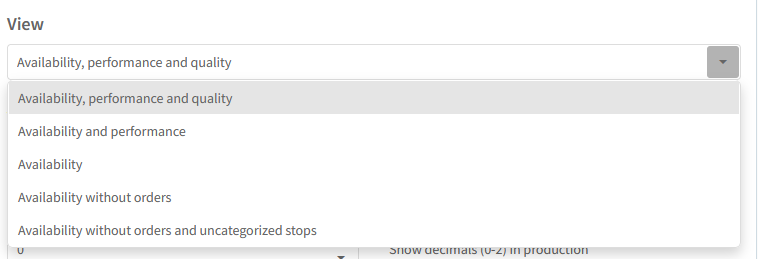
Click "Apply".

Click the Categorize stops button: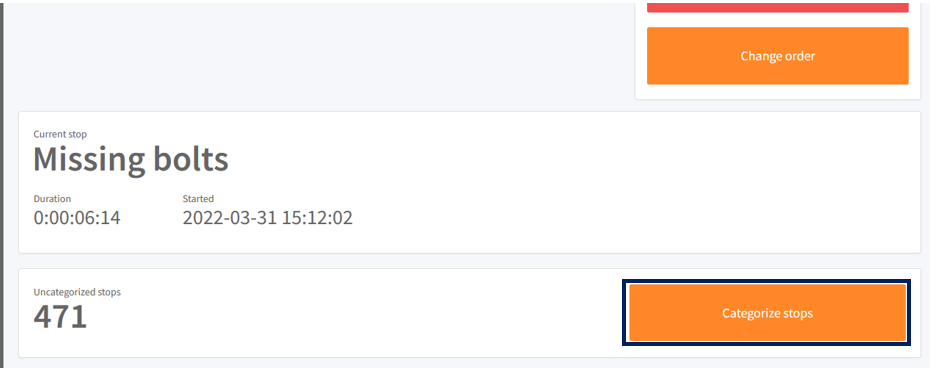
A list of uncategorized stop is shown, click "Categorize" for a given stop.

Now select the new stop cause.
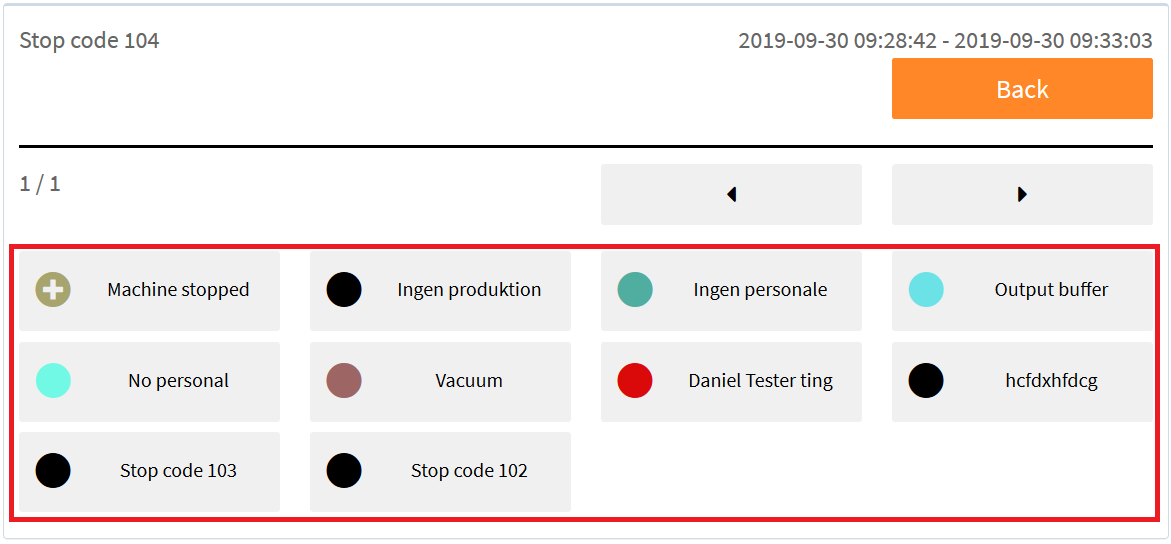
Assign stop cause in Stop history
Go to "Stop history".
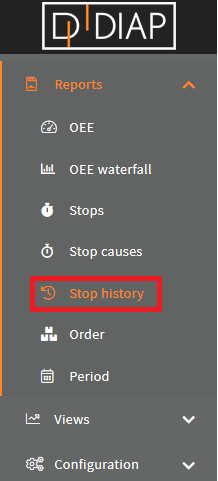
Select your unit.

Select your search period.
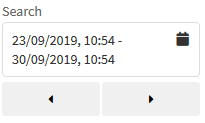
Select the orders that you will search in.

Select the products that you will search in.

Select the shifts that you will search in.

And finally product types.

Click "Apply".

Click the pencil icon for the stop, that you wish to change the stop cause for.


Now select the new stop cause.

All the assigned stop causes from Assign stop causes to a unit for the unit will be available here.
There also filters for the columns here.


